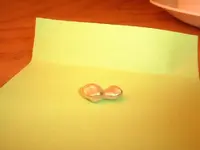There has been some very good feedback on this thread. Lot's of folks sharing real experience is a good thing.

Let's talk about what a yard is. Without an understanding of the measurement used for placer mining we can't really get an understanding of just what good paying ground is.
A yard is a cube of material that's 3 foot on each side. Sometimes that yard might be a little more than 40 buckets and sometimes that yard may be a small part of a boulder. Some yards are mostly troublesome cobbles and other yards could be good paying pea gravel. All yards are counted in figuring out the number of grams per yard in a placer deposit - even the overburden and boulders.
Think about that for a minute.
If you process 42 five gallon buckets of material from a crack in a boulder or 42 five gallon buckets of classified material the gold you recover is not a valid measurement of grams per yard in your deposit. The true grams per yard is figured by processing yards of cubic material as they are found in the deposit.
Imagine a post planted every 3 feet in each direction on your placer. This would make a field of posts in a square grid all over your placer. Tie a string around the first post and wrap it around the next post in line and the next etc. until you come to the end of the placer. Do this with all the posts so your posts and strings form a string fence around each three foot section. Now dig down three feet in each box. Each box will now have one cubic yard of material removed. Process all those yards and you will have an accurate count of just how many grams of gold your placer will produce in the top cubic yard.
As you do this you will rather quickly run into several problems depending on where your placer was discovered.
If you are on the typical California river you will mostly be processing larger rocks and boulders. Those larger rocks and boulders don't produce any gold but they do make the job
much tougher. When you count your gold after processing a field of boulders you won't get much gold per yard of actual material moved at all but you will be very tired and frustrated.
If you are on the Carlin Trend in Nevada you will spend a small fortune processing those yards. The tough part there is finding an efficient way to recover gold so small and scattered you would have a difficult time seeing the gold without a microscope.
The California river might have looked like a few grams per yard when you were just picking the material out of cracks in the rock but as soon as you exhaust those cracks you will have to move those boulders to get to the cracks below. If you don't you will quickly run out of ways to get gold. Your placer will be a bust no matter how many grams it holds. If you can't get to it efficiently you will end up looking for the next few crumbs with only the prospect of someday finding no more gold.
The Carlin Trend will make it obvious you will need to process a
lot of material to get a little gold. This is big equipment territory. The big money and numbers are mined in the Carlin Trend because there is a lot of yards with a little gold.
If you look these two situations over you will see that in neither one are there a lot of grams per yard. The river placer will pay off for a few weeks or months of mining for a miner or two but doesn't suit a large operation or a long term income. The Carlin deposit will pay off for years to come for a large well funded miner with big overhead and huge custom equipment investment, but it is worthless to the one or two man team.
As you can see the actual grams per yard may be less important than the effort required to move and process that yard.
I wrote that we look for easy access - easy working placers that produce 3 grams, or better, per yard. That's the bottom limit for a small team working easy ground. I know many individual miners who manage to
survive on 1 gram deposits. As long as they are working 2-3 yards a day at 1 gram per yard they can get by. As soon as that pay streak goes below 1 gram they are in trouble. Experience will tell that the 1 gram pay streaks always fall below that level - usually sooner than later.
This isn't a lesson about mining. The information here isn't really of much use to a miner. It IS a lesson about prospecting. Prospecting isn't about finding some gold or even about finding 1 or 5 or 10 grams per yard. Prospecting is about finding and defining a deposit that will pay a profit
when it's mined. That profitable deposit may need to reliably produce 50 grams per yard if the yards are difficult to process and the deposit is small. It may only need to reliably produce 3 grams per yard if the material is easy to process and a large deposit.
It's up to the prospector to find the deposit that is worth working. No matter how many grams per yard the prospector finds it will not be worth mining if it can't reliably produce a profit.
Prospect first and then mine.

Heavy Pans
p.s. 1 gram deposits aren't rare but they are usually small or hard to work. 3 gram deposits with legs are few and far between. There is a reason gold is so valuable - it's rare and a lot of work to mine.






